Hybrid larch (HL)
Hybrid larch is a cross between European larch (L. decidua) and Japanese larch (L. kaempferi). It carries characteristics of both parents, but growth rates show typical hybrid vigour growing faster than both. Often called the Dunkeld larch after the site it was thought to have first occurred it has now been renamed as it is now thought to have first crossed in Switzerland.
A species which could be used to replace Sitka spruce on sites vulnerable to drought in eastern Scotland, but only if guaranteed hybrid material is available. However its use now and in the future is under review with the continuing impacts of the disease Phytophthora ramorum affecting planting potential in much of Britain.
Hybrid larch is categorised as a Principal tree species. These are tree species where silvicultural knowledge provides confidence to enable successful deployment across Britain. The species are either already widely used or are increasing in usage. They will continue to be important unless affected by a new pest or disease or become adversely affected by climate change.
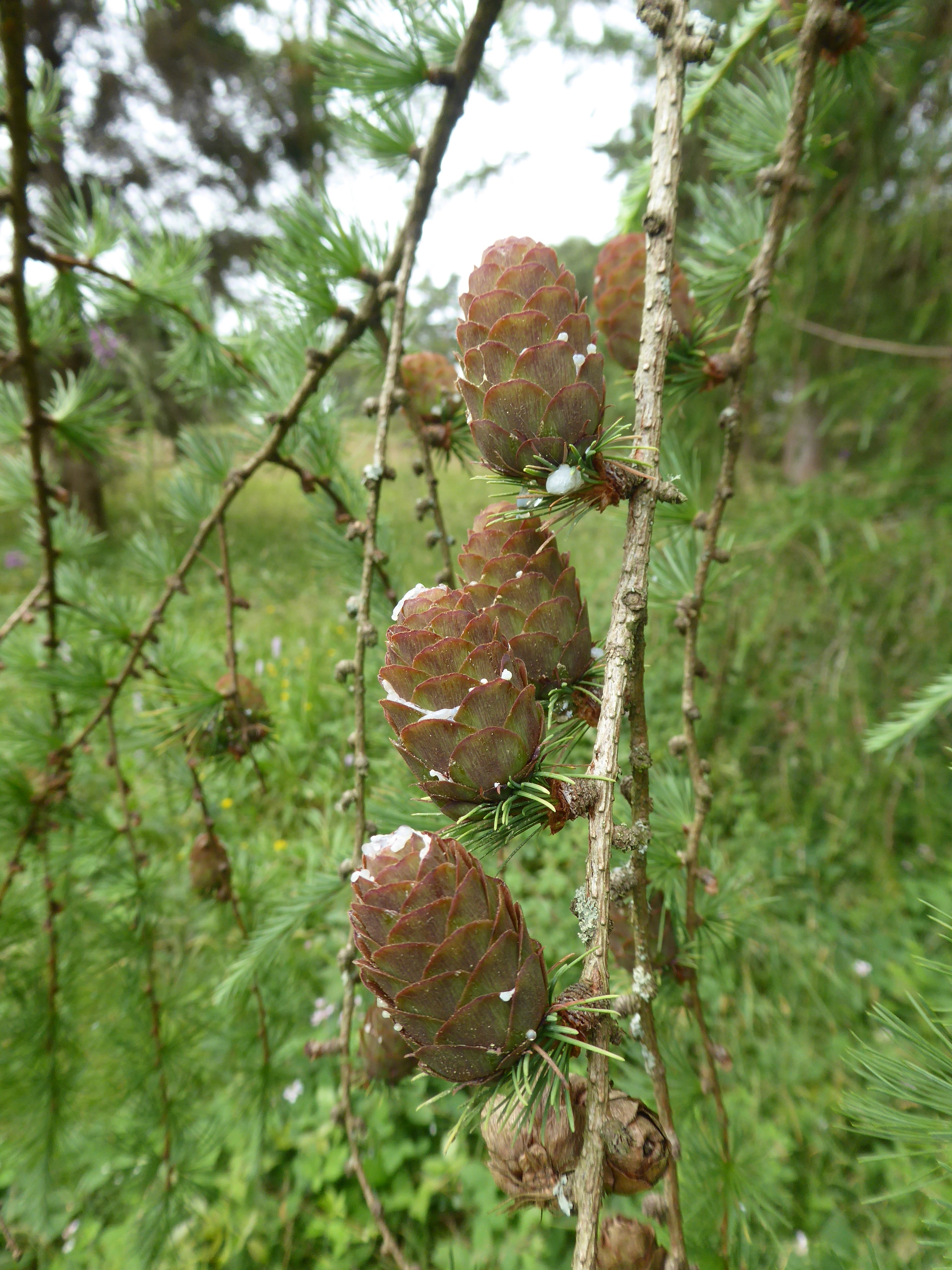
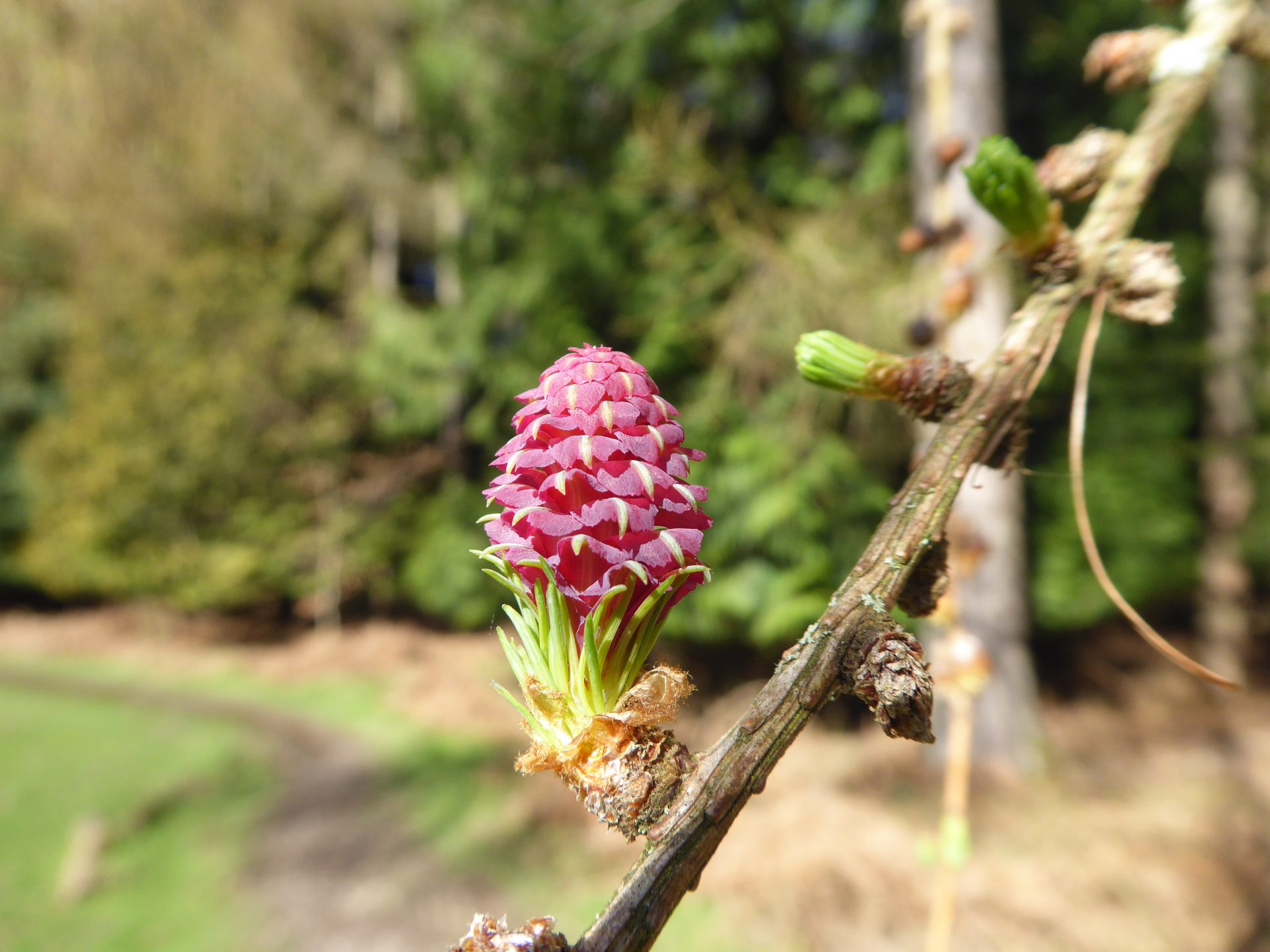
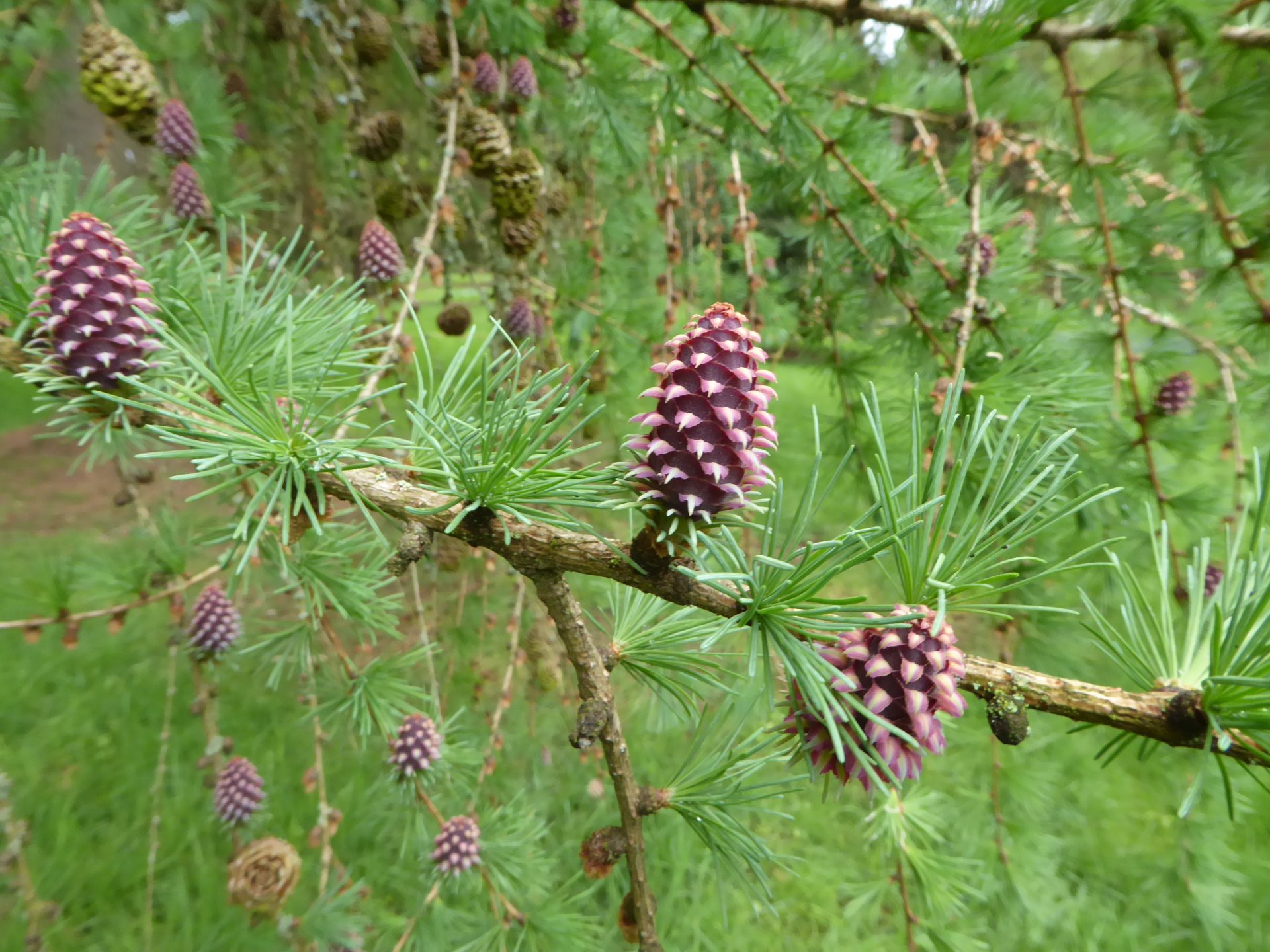
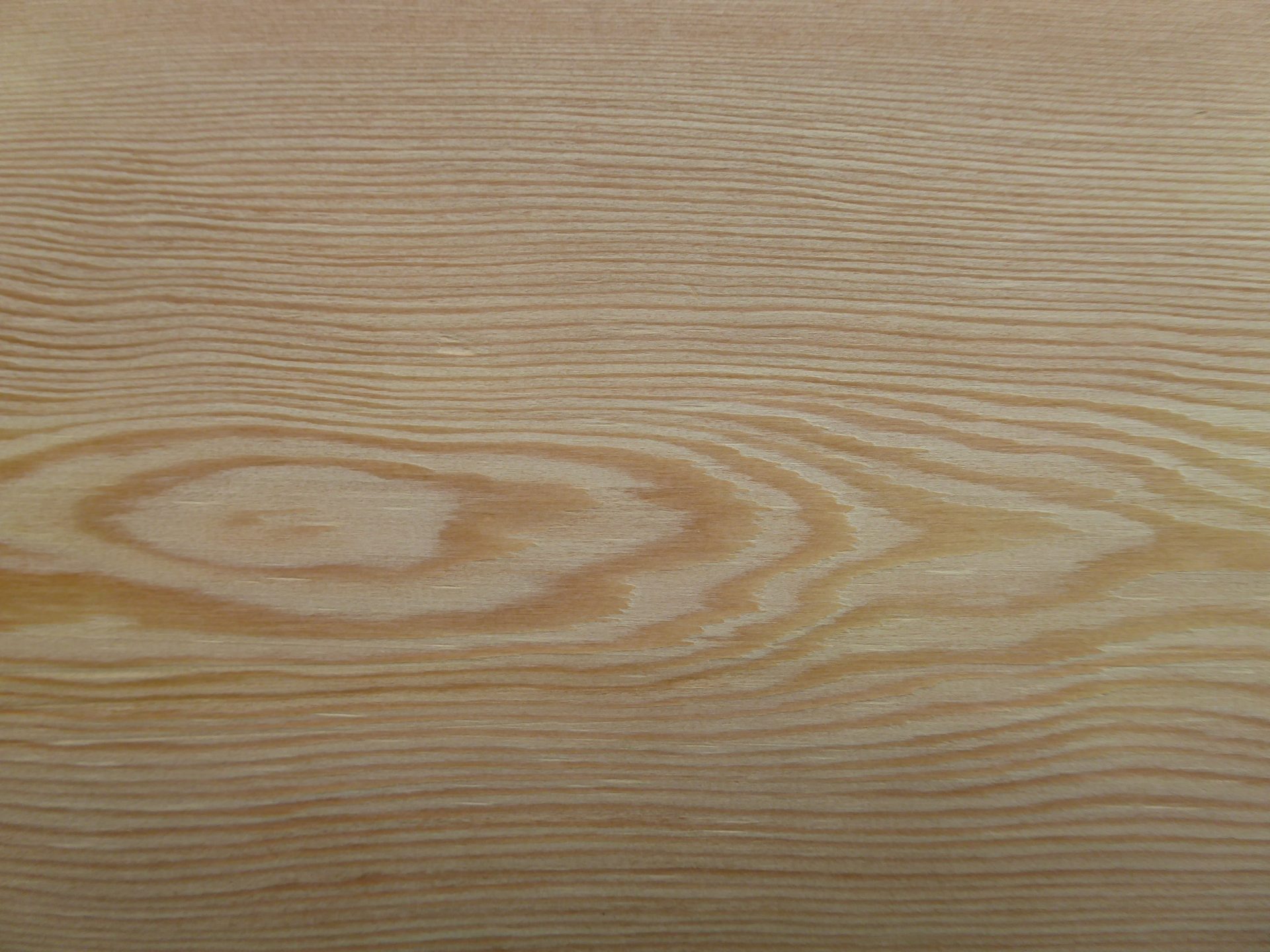
Range
No native range as the species is a cross between European and Japanese larches which shows hybrid vigour.
Provenance Choice
Only material from seed orchards or from controlled crosses should be used. Sometimes difficult to get true hybrid larch seed if other larch species are present.
Site Requirements
A very fast-growing pioneer species with good stem form probably best suited to areas within between 700- and 1500-mm rainfall. Cold hardy and withstands moderate exposure, while susceptible to spring frosts. Best suited to mineral soils of poor nutrient status but has also grown well on well drained peats. Will out-yield both Japanese and European larch on similar sites. Vigorous height growth may make it difficult to manage in mixture.
Further detail on the site requirements of hybrid larch in current and future climates can be examined using the Forest Research Ecological Site Classification Decision Support System (ESC).
ECOLOGICAL SITE CLASSIFICATION TOOL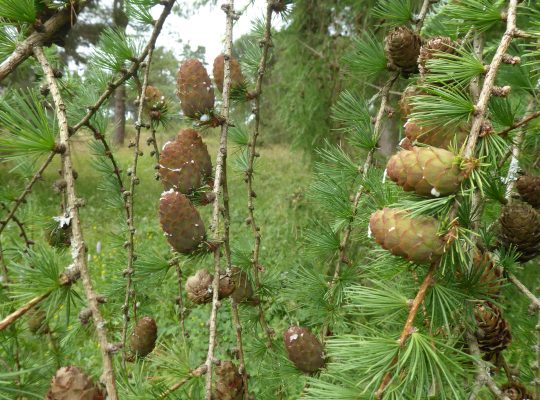
Silviculture
Hybrid larch is classed as a pioneer species and a strong light demander. As a deciduous species it has recognised soil improvement capabilities providing improved phosphorus status in soils where it is grown. Hybrid larch as with European and Japanese larch is also regarded as a good nurse species. As a component of some mixed species plantations, it has the potential to significantly enhance their profitability, by virtue of its rapid early growth and superior form.
Hybrid larch as with European larch should be planted at 2 x 2 m (2,500 plants/ha). It also flushes early, and planting should be completed before flushing starts. Water stress over a dry spring, planting on very free draining slopes or on sites where the soil remains cold after flushing can lead to losses. It is very shade intolerant, so good weeding during establishment is essential to control competing vegetation. Nursery plants tend to be more expensive than European or Japanese larch due to the often-restricted availability of seed. Plantings of hybrid larch are best suited to sites where timber production is the principal objective.
Hybrid larch tends to self-prune – unlike most other conifers – if managed in well stocked stand. Pruning may be necessary in more open plantings or mixed stands if a quality sawlog is required. As a strong light demander, thinning should start before the stand reaches 10 m height and should be heavy to provide adequate room for individual trees. Delayed thinning results in a serious reduction in crown density which does not recover easily. Subsequent thinning’s should be conducted at 3–5-year intervals. On very good sites hybrid larch can achieve 14 Yield class (less elsewhere) on a rotation length of 50-60 years. On the same sites other conifer species can be more productive.
A pioneer species with rapid early height growth and good stem form while the light shade makes it suitable for growing in mixture with broadleaves or other conifers.
Pests and Pathogens
Larch species are seriously affected by the introduced pathogen, Phytophthora ramorum, which is causing widespread mortality of larch in many parts of Britain. Japanese larch is highly susceptible but both European larch and hybrid larch are also affected. Phytophthora ramorum is notifiable, and any suspected cases should be reported via TreeAlert.
All three larches (EL, JL and HL) can be killed following attacks by the larch bark beetle, Ips cembrae, which is found in mainland Britain. Trees under stress are preferentially attacked. Ips cembrae is notifiable, and any suspected cases should be reported via TreeAlert.
European larch can also be affected by conifer root and butt rot (Fomes) Heterobasidion annosum as well as another butt rot fungus, Phaeolus schweinitzii.
Occasionally susceptible to the fungal disease, larch canker (Lachnellula willkommii), which causes perennial cankers that girdle or distort branches and stems. Can also occasionally suffer striking defoliation by the needle cast fungus Meria laricis.
See our other tools and resources
Further Resources
External
Further information
In addition to the general sources of information for species the following are useful for hybrid larch.
Da Ronch, F., Caudullo, G., Tinner, W., de Rigo, D., 2016. Larix decidua and other larches in Europe: distribution, habitat, usage, and threats. In: San-Miguel-Ayanz, J., de Rigo, D., Caudullo, G., Houston Durrant, T., Mauri, A. (Eds.), European Atlas of Forest Tree Species. Publ. Off. EU, Luxembourg, pp. e01e492+
Reynolds, C et al. (2021) Providing the evidence base to diversify Britain’s forests: initial results from a new generation of species trials. Quarterly Journal of Forestry 115: 26-37.
Tree pests and diseases – GOV.UK (www.gov.uk) 2020.




